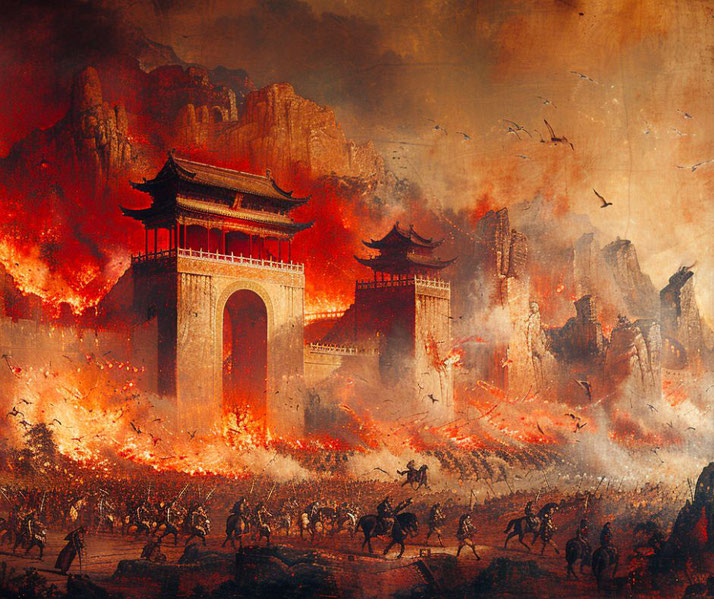Ancient China in crisis: The Period of Disunion and the rise of the Sui Dynasty

In Chinese history, there was a dramatic period known as the Period of Disunion, or the Six Dynasties period. It unfolded between 220 and 589 AD.
This era began after the fall of the Han Dynasty, and was a time when China was split into various kingdoms that were often at war with each other.
It was a time of great confusion, with different leaders and dynasties trying to unite China under their rule, but none were successful for long.
Who was trying to take control of China?
During these centuries, China was not one big country but rather divided into three main kingdoms at first – Wei in the north, Shu in the southwest, and Wu in the southeast.
This is famously known as the period of the Three Kingdoms. Over time, these three kingdoms changed, and other dynasties rose and fell, each leaving its own mark on Chinese culture, arts, and philosophy.
Despite the constant battles and changes in leadership, this period also saw significant advancements in poetry, painting, and Buddhism spread throughout China.

Rise of the Sui Dynasty
Then came a time of change with the beginning of the Sui Dynasty in 581 AD. A man named Yang Jian, who later became Emperor Wen, managed to do what seemed impossible for so long – he reunited China after nearly 300 years of division.
He declared the start of the Sui Dynasty, bringing an end to the Period of Disunion.
Under the Sui Dynasty, which lasted until 618 AD, China saw many important changes and improvements.
Emperor Wen and his son, Emperor Yang, worked hard to strengthen the country.
They built the Grand Canal, an enormous waterway that linked the north and the south of China.
This canal was not just for moving boats; it was a superhighway for trade and helped to bring the country closer together.
They also tried to improve the government by making it more organized and by starting exams for people who wanted to work for the government, which was a way to find the smartest and most talented people to help run the country.

The fall of the Sui Dynasty
However, the Sui Dynasty also had its problems. Emperor Yang, in particular, was known for spending too much money on big projects and wars to try to expand the empire.
His people were not happy about this, as it meant they had to pay more taxes and many were forced to work on these big projects.
This unhappiness led to rebellions, and in 618 AD, after Emperor Yang was killed, the Sui Dynasty came to an end.
But the foundation they laid and the efforts to unite China paved the way for the next dynasty, the Tang Dynasty, to rise and create a golden age for China.
Why this history matters today
The Period of Disunion and the Sui Dynasty show us how times of trouble and division can lead to new beginnings and how leaders try to bring people together for a common good.
Even though the Sui Dynasty lasted for a short time, its efforts to unite China and its achievements, like the Grand Canal, have been remembered for centuries.
Further reading
What do you need help with?
Download ready-to-use digital learning resources
Copyright © History Skills 2014-2024.
Contact via email
With the exception of links to external sites, some historical sources and extracts from specific publications, all content on this website is copyrighted by History Skills. This content may not be copied, republished or redistributed without written permission from the website creator. Please use the Contact page to obtain relevant permission.





